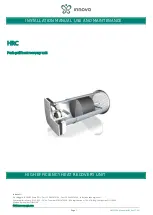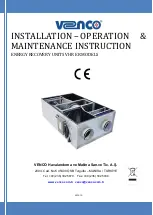
V1.0
180 MULTI-PROCESS MIG-ARC-TIG WELDER
8611311
Visit www.princessauto.com for more information
17
OVER-VOLTAGE
This equipment has an automatic voltage compensation function, which enables the unit to
maintain the voltage within the given range. In case that the input voltage or amperage exceeds
the stipulated value, it is possible to damage the equipment’s components. Please ensure your
primary power supply is correct (See Specifications).
DOWNSLOPE SETTING
Downslope is the gradual reduction of power to the electrical arc at the end of the welding
process. The power reduction allows the metal to cool more slowly and avoid a brittle weld or
stress cracks.
Downslope begins after releasing the torch trigger to shut off the welding arc. The power is
reduced over a preselected time of 1 to 10 seconds (E). At the end of the selected duration,
both the arc and gas are stopped. The crater fill operation is automatic to factory preset level.
IMPORTANT! This feature is only recommended for welding jobs that exceed 70 amps.
BURNBACK SETTING
Burnback is a feature that continues to supply power to the welding wire after the torch
trigger is released, but stops the welding wire from feeding. This provides time for the
welder to remove the welding wire from the weld pool before it solidifies. The setting is
preset by the factory,
SMARTSET
Smartset is a predefined setting based on the type of gas and wire diameter used. Turn the
Smartset knob (F) to the correct setting and the welding machine will use a predetermined
voltage and wire speed, allowing the user to quickly find the best welding parameters for a
given metal.
ARC (MANUAL METAL ARC) WELDING
One of the most common
types of arc welding is
manual metal arc welding
(MMA) or stick welding. An
electric current is used to
strike an arc between the
base material and a
consumable electrode rod or
‘stick’. The electrode rod is
made of a material that is
compatible with the base material being welded and is covered with a flux that gives off
gaseous vapours that serve as a shielding gas and providing a layer of slag, both of which
protect the weld area from atmospheric contamination. The electrode core itself acts as
filler material the residue from the flux that forms a slag covering over the weld metal must
be chipped away after welding.
1. Strike the electrode on the workpiece to create the arc and hold the
electrode steady to maintain the arc (Fig. 23)
2. The heat of the arc melts the surface of the base metal to form a
molten pool at the end of the electrode.
3. The melted electrode metal is transferred across the arc into the
molten pool and becomes the deposited weld metal.
4.
The deposit is covered and protected by a slag, which comes from the electrode coating.
5.
The arc and the immediate area are enveloped by an atmosphere of protective gas
Fig. 23
Fig. 22
















































